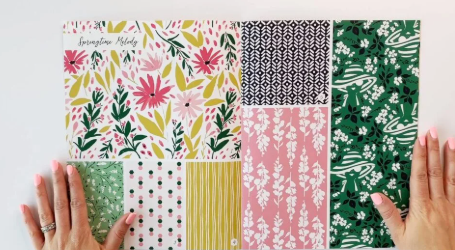
Creating a Portfolio of Unique Patterns: Essential Steps
Have you ever considered showcasing your design skills through a stunning collection of custom patterns? A well-curated portfolio of unique patterns can open up opportunities in the fashion and digital design industries. With tools like a vector pattern generator, you can streamline the process of creating seamless, scalable designs while exploring endless creative possibilities. Let’s walk through the essential steps to build a standout pattern portfolio that reflects your artistic flair and technical expertise.
1. Defining Your Portfolio’s Purpose and Theme
Every great portfolio starts with a clear vision. Think about the purpose of your collection—are you aiming to attract clients, showcase versatility, or focus on a specific niche? Defining a theme can guide your creative direction and ensure your patterns resonate with the intended audience.
For instance, you might choose a nature-inspired theme featuring floral and geometric motifs or explore abstract designs with bold colors and dynamic shapes. Using a vector pattern generator by Adobe allows you to experiment with ideas and refine them to align with your portfolio’s aesthetic.
2. Gathering Inspiration and Sketching Initial Concepts
Inspiration is the foundation of any creative project. Look for ideas in your surroundings, art, culture, or even design trends. Once you’ve gathered inspiration, start sketching rough concepts to translate your ideas into tangible forms.
Sketching doesn’t have to be perfect—it’s about exploring possibilities and finding motifs that you can later refine. These initial sketches can serve as the building blocks for your patterns. Import them into design software to start building the digital versions of your ideas.
3. Using Tools to Create Seamless Patterns
Seamless patterns are at the heart of professional design portfolios. Ensuring that your patterns repeat flawlessly requires precision, and tools like pattern generators make this process effortless. These tools enable you to create intricate designs that align perfectly when tiled, saving time and reducing manual errors.
Experiment with different layouts and repeat styles to add variety to your portfolio. Whether it’s a simple grid or an asymmetrical arrangement, the right tools help you achieve a polished and professional look. Test your patterns by tiling them on a larger canvas to identify and fix any issues.
4. Incorporating Color and Texture for Impact
Color and texture are powerful tools for making your patterns stand out. Choose a cohesive palette that complements your portfolio’s theme, and consider adding gradients, shadows, or overlays to create depth and dimension.
Testing different color variations of the same pattern can showcase your versatility as a designer. Textural elements, whether subtle or bold, can further enhance the visual appeal of your designs. These details help your portfolio leave a lasting impression on viewers.
5. Presenting Your Patterns in Context
A portfolio isn’t just about the patterns—it’s about how you present them. Showcase your designs in real-world applications to help potential clients or employers visualize their potential. Mockups of fabric, wallpaper, or product packaging can bring your patterns to life and demonstrate their versatility.
Additionally, organize your portfolio to flow naturally. Group patterns by theme, color palette, or application to create a cohesive presentation. Include brief descriptions of your inspiration and creative process to give viewers insight into your design approach. Creating a portfolio of unique patterns is an exciting opportunity to highlight your creativity and technical skills.




